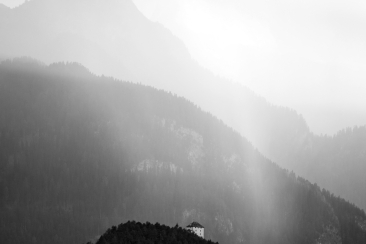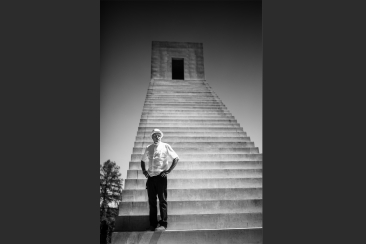Artist. Lord of the castle. Sentinel
Not Vital
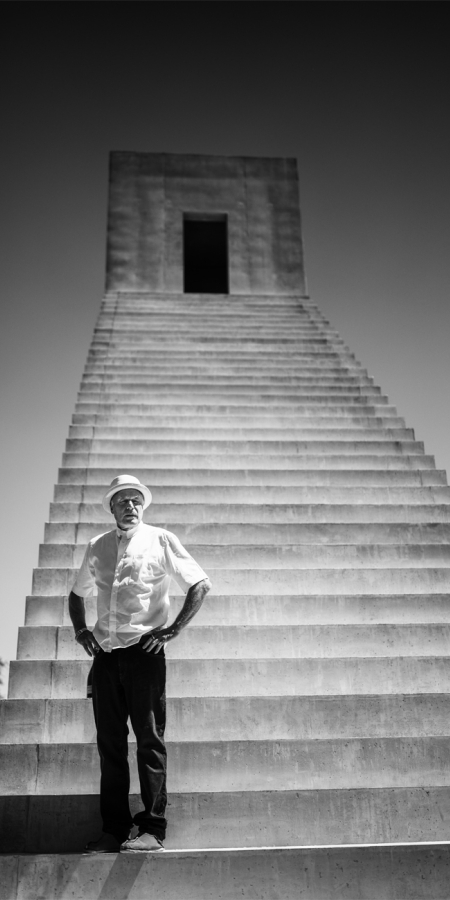
«House to watch the sunset»
When we went to school, there were only five continents
It's a hot summer's day in the Lower Engadine. Friday the 13th, at exactly 1.13 pm. The assembled guests look up in anticipation. To where Not Vital stands. On the stairs to his newly built «House to watch the sunset». Then finally, as the champagne bottle is tapped and the sparkling contents flow down the lower of the 39 steps, the third house is opened.
Agadez, Niger. Amazonas, Brazil. And now also in Tarasp in the Engadine. The work comprises three staircases and four floors with a total height of 13 metres. Just a stone's throw from the castle. The flags waving in the wind on the roof are easy to recognise. On the left is that of Niger, on the right that of Brazil – the locations of the first two «Houses to watch the sunset».
Vital relies on the region's resources for construction. His brother Duri Vital supported him as architect and a construction company from Ardez finally realised his idea. The sand for the concrete comes from the Inn. «Everything was created within a radius of around 13 kilometres,» he says and is rewarded with a hearty laugh from the audience.
«When we went to school, there were only five continents,» says Not Vital. As a result, two more houses are to be built, one made of aluminium on an island in the South Pacific and one made of iron in Mongolia. Visitors to the opening were clearly impressed by the work of art, which, incidentally, was designed in 13 minutes according to the artist, and the Lower Engadine has a new eye-catcher.
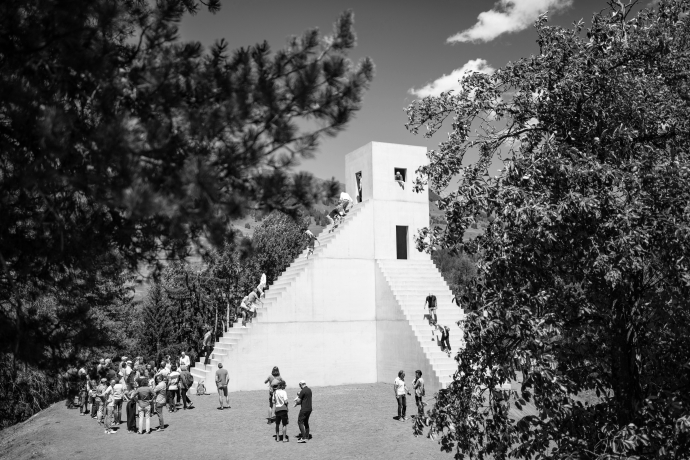
Show all 2 images

The lord of the castle
However, the landmark of the valley in the border triangle of Switzerland, Austria and Italy is not entirely new: Tarasp Castle.
It was built around 1040 by the Lords of Tarasp, then taken over by an Austrian county and finally transferred to the Helvetic Republic by Napoleon in 1803. In 1900, the industrialist Dr Karl August Lingner - inventor of Odol mouthwash – decided to purchase and renovate the fortress, which was in ruins at the time, during a spa stay in Vulpera. After his death in 1916, the castle passed to the Ernst Ludwig von Hessen family and remained in their possession until 2016, when Not Vital was able to acquire the castle for 7.9 million francs after lengthy negotiations – the family was looking for a buyer.
I will do everything in my power to turn the castle into a place of cultural significance and human encounters, thereby contributing to the attractiveness of the municipality and the overall economy of the region.
For the «Fundaziun Chastè da Tarasp», the long search for a solution for the castle has thus come to a positive conclusion, as it will now be preserved as a public asset for the region.
The artist is keeping his promise. Step by step, he is furnishing the castle with contemporary art. In doing so, he is preserving the old and respecting the history of the Chastè, such as the largest private organ in Europe, which is spread over three floors with 2,700 pipes. Every now and then he sits in front of the instrument himself and lets the impressive tones resound.
It is remarkable how Vital incorporates his own art and art collection into the rooms while preserving the original character of the castle, which is steeped in history. There is also plenty to discover in the grounds and the immediate surroundings. A huge metal ball floats on the Lai da Tarasp, the small lake. It represents nothing other than the moon, in whose silvery glow the surroundings are reflected.
Not Vital receives support from the young, internationally active Engadin artist Giorgia von Albertini, who has known him since childhood through her mother, who is also an artist. She has been working as a curator and organising his exhibitions since 2014.
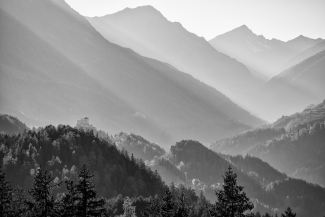
The writer
Vital's artistic field of activity is diverse. During a reading at the Chesa Planta in Samedan, Chasper Pult, lecturer in Romansh and cultural mediator, described him as a talented writer. The artist began writing poems at an early age, initially under the pseudonym OMV (Otto Maria Vital, his father's name). His book «Kec' & frajas» was published in 2019.
Sentiner
Not Vital was born in 1948 in the mountain village of Sent, which lies high above the Inn Valley. His family has lived there for 700 years. Sent is also known for its randulins (Rhaeto-Romanic for swallows): People who always left but returned – just like Vital.
He acquired his passion for construction through the work of his father, Otto Mario Vital, who worked in the timber business and owned a sawmill. The young Vital initially built his first buildings in the neighbourhood out of boredom, in the «television-less era».
I didn't take over many things from my father, but I did take over important things.
He was first introduced to art by the influential art historian Max Huggler (1903-1994), who had a holiday home near Sent and brought the then young Not Vital into contact with high-quality works of art. Another pioneer who later helped him achieve his breakthrough was the gallery owner and art collector Gian Enzo Sperone, who exhibited works by Vital in his gallery in New York.
After leaving school, the «randulina» was no longer able to stay in Sent and the budding artist began travelling the world. Like so many before him, he first travelled to Paris, where he attended art school. Rome and New York followed, as well as his more recent places of work in Rio de Janeiro and Beijing. Nevertheless, as befits a swallow, he has always returned to his home village.
Parkin Vital
The park is almost inconspicuous at the western entrance to the village of Sent. Only a gate, which is easy to miss when driving to Sent, and the artistic sculpture in front of it, which Vital gave to his friend, the Chinese artist Ai Weiwei, hint that something else could be hiding in the proud Engadine village: A park landscape, indeed much more a fairytale world on 23000 m2.
Until 1965, the property was owned by the emigrant Luzio Crastan, who wanted to turn it into his holiday and retirement home with a magnificent villa. However, the project was never completed and after his death, his daughter sold the land to Otto Augustin, before Not Vital acquired the property in 1998 and began to build the park with the help of his brother Duri Vital.
During the guided tour through the mysterious green area, mnemonic bridges invite daredevils to cross it on aluminium skulls, sometimes high above the ground. On what appears to be a floating stage, the surrounding nature and the mountain panorama can be particularly absorbed. Sculptures can be discovered again and again. The staging between fantasy and reality, between nature and culture, is fascinating. It is not just a place to linger. It is a place to be. And when you think you can't expect anything more, the earth opens up on a slope and a house rises up.
Not Vital is changing the artistic landscape in the Lower Engadine. He enriches it and invites all interested parties to accompany him on his journey.
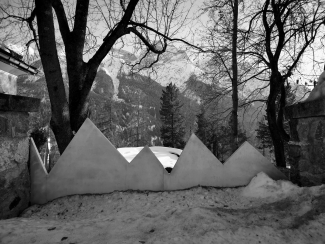
When I was tired of searching, I learnt to find
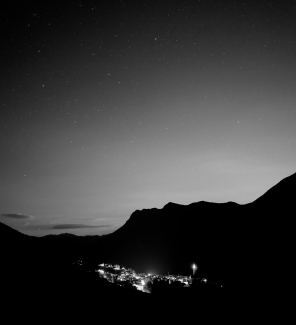
Quote 1 Opening of the ‘House to watch the sunset’, Tarasp, 13.08.2018
Quote 2 Press release, 30.03.2016
Quote 3 & 4 Meeting with Not Vital and Chasper Pult, Chesa Planta, Samedan, 22.08.2018
By Dominik Täuber
